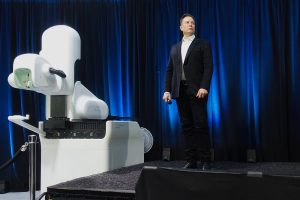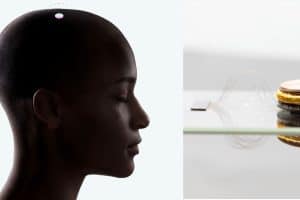- 🧠 Neuralink aims to have over 1,000 human implants by 2026.
- 📅 By the end of 2024, Neuralink plans to reach “high single digits” in brain implant patients.
- 📈 Future goals include thousands of patients, pending successful trials and regulatory approvals.
- 💬 Elon Musk mentioned on social media that the 2026 goal is achievable.
- 💡 Neuralink’s technology has the potential to be life-changing for patients.
- 👨🦽 The first patient, Noland Arbaugh, saw significant improvement in his ability to interact with technology.
- 🎮 With Neuralink, Arbaugh can now play video games and is looking to support his family through tech.
- ✅ The FDA has approved a second human patient for Neuralink’s trials.
- 📣 Neuralink may soon announce the identity of its second human patient.
Neuralink, the brain-machine interface startup spearheaded by Elon Musk, continues to capture the imagination of technophiles and medical professionals alike. With ambitious plans to have over 1,000 human brain implants by 2026, this innovative company is pushing the boundaries of what’s possible in neuroscience and technology. This blog post delves into Neuralink’s progress, its goals, and the transformative potential it offers to patients around the world.
Neuralink’s Ambitious Goals
Target for 2026: 1,000 Human Implants
As tweeted by Elon Musk, Neuralink’s aim to have over 1,000 human brain implants by 2026 is not just a lofty dream but a probable outcome. The company is laying out a roadmap that sets the stage for multiple milestones over the next few years.
Short-term Milestone: 2024
By the end of 2024, Neuralink plans to have “high single digits” in terms of brain implant patients. Achieving this short-term goal will be a significant step towards more widespread adoption and will help gather essential data for future advancements.
The Future: Thousands of Patients
Neuralink is not stopping at 1,000 patients. The company envisions thousands of brain-machine interface recipients in the coming years, contingent on the success of ongoing trials and regulatory approvals. Such an expansive vision necessitates rigorous testing and validation to ensure both safety and efficacy.
The Role of Regulatory Approvals
The FDA’s Involvement
Neuralink’s journey from concept to implementation involves navigating a complex landscape of medical regulations. Recently, the FDA approved a second human patient for Neuralink’s trials, marking a significant endorsement from a key regulatory body.
The Importance of Regulatory Approvals
Securing regulatory approvals is crucial for the broad acceptance of any medical technology. These approvals ensure that the technology meets stringent standards for safety and efficacy, which is particularly important given the invasive nature of brain implants.
Transformative Potential: Real-life Examples
Case Study: Noland Arbaugh
Noland Arbaugh, Neuralink’s first human patient, provides a compelling case study for the life-changing potential of this technology. Paralyzed from the neck down, Arbaugh struggled to interact with technology before receiving his Neuralink implant.
Newfound Abilities
Post-implant, Arbaugh has seen a substantial improvement in his ability to use tech devices. He can now play video games and is exploring new ways to support his family through tech-based jobs.
Community and Support
Elon Musk and other X users have advised Arbaugh to monetize his social media presence and engage in game streaming, showcasing how the digital community can play a role in supporting Neuralink patients.
The Broader Impacts of Neuralink’s Technology
Life-changing Implications
The potential applications of Neuralink’s technology are vast. From giving paralyzed individuals new ways to interact with the world to possibly treating a variety of neurological conditions, the scope is almost limitless.
Technological Advancements
Neuralink is not just about medical applications; it’s also pushing the envelope on technological frontiers. The brain-machine interface can revolutionize how humans interact with machines, opening up new avenues for research and development.
Conclusion
Neuralink stands at the cusp of revolutionizing both medical and technological landscapes. With ambitious targets, rigorous planning, and the backing of Elon Musk, the company promises to redefine the possibilities of brain-machine interfaces. As we look forward to 2026 and beyond, it’s clear that Neuralink’s journey is just beginning, and its impact could be monumental.





